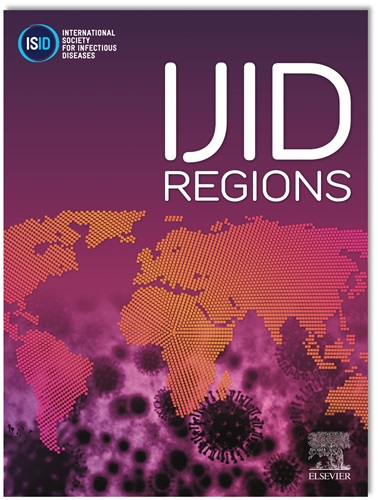Lymphatic filariasis transmission 10 years after stopping mass drug administration in the Gomoa west district of Ghana
IF 4.8
2区 医学
Q1 INFECTIOUS DISEASES
引用次数: 0
Abstract
Objectives
A survey was conducted 10 years after stopping MDA in the Gomoa West District of Ghana to assess the Wuchereria bancrofti prevalence in both human and mosquito populations.
Methods
In seven communities, infection in humans was assessed using the filariasis test strip (FTS). Mosquitoes were collected once a month over six months using pyrethrum spray catches (PSC). The mosquitoes were analyzed for W. bancrofti infections, using dissection followed by poolscreening PCR.
Results
FTS results showed that 2/524 (0.38%; 95% CI, 0.0%-0.9%) individuals tested positive for antigen. Dissections revealed W. bancrofti infections in 5/107 Anopheles gambiae (4.7%: 95% CI, 2.2-8.5) from one community, with three mosquitoes harboring L3 larvae (2.8%: 95% CI, 0.9-7.5). PCR analysis of 683 mosquitoes in 57 pools revealed seven positive pools from two communities. The prevalence of infected mosquitoes by PCR for the district was 3.1% (95% CI, 0.5-24.0) for An. gambiae and 2.5% (95% CI, 0.4-23.5) for all Anopheles spp.
Conclusions
The infection rate in the Anopheles spp. exceeds the provisional 1% threshold suggested by WHO, indicating ongoing transmission risk ten years after stopping MDA. Further district-wide assessments are recommended to inform the scope of any interventions required in the Gomoa West district.
求助全文
约1分钟内获得全文
求助全文
来源期刊
CiteScore
18.90
自引率
2.40%
发文量
1020
审稿时长
30 days
期刊介绍:
International Journal of Infectious Diseases (IJID)
Publisher: International Society for Infectious Diseases
Publication Frequency: Monthly
Type: Peer-reviewed, Open Access
Scope:
Publishes original clinical and laboratory-based research.
Reports clinical trials, reviews, and some case reports.
Focuses on epidemiology, clinical diagnosis, treatment, and control of infectious diseases.
Emphasizes diseases common in under-resourced countries.

 求助内容:
求助内容: 应助结果提醒方式:
应助结果提醒方式:


